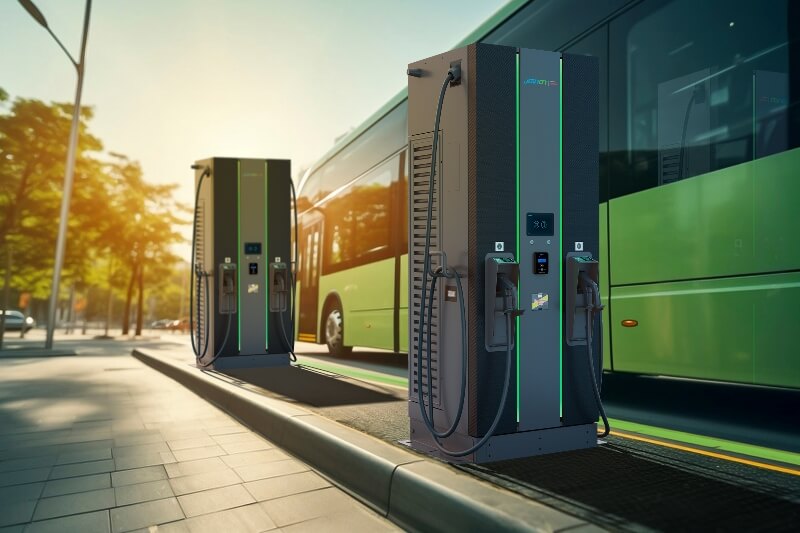

The electrification of local authority fleets is no longer a question of if, but when. With Government commitments to net zero and growing public demand for sustainable solutions, councils across the UK are under increasing pressure to modernise their fleets.
Yet, the transition is not as simple as just swapping diesel for electric vehicles (EVs). True success requires a holistic approach—integrating infrastructure, technology, and long-term planning—with the real future of fleet electrification lying in collaboration and in building infrastructure that balances immediate operational demands with long-term strategic goals.
By offering insight, foresight, and customised support, the right partner can ensure solutions are designed to meet the needs of today while remaining adaptable for the challenges and opportunities of tomorrow.
When it comes to fleet electrification, installing charge points is only part of the challenge. Councils must consider grid capacity, site selection, user accessibility, and total cost of ownership. A narrow, product-only focus risks creating infrastructure that lacks resilience, scalability, or integration with broader mobility strategies. The right partner brings more than technical know-how. They act as strategic advisors—helping authorities assess their current fleets, anticipate future requirements, and plan infrastructure that avoids early obsolescence. This approach ensures that every investment made contributes to a system that has the capability to evolve as technologies, regulations, and operational needs shift.
For many local authorities, depot charging forms the backbone of electrification—it allows fleets to start each day fully charged, supports efficient scheduling, and ensures reliable vehicle availability for time-sensitive operations. The Depot Charging Scheme provides critical financial support by covering 75% of charge point and civil costs, of up to £1m across all sites. Available to councils, not-for-profits, and fleet operators across the UK, it enables organisations to build charging infrastructure where it is needed most. Leveraging the expertise of an experienced partner, depots can be strategically designed to optimise space utilisation, manage energy loads efficiently, and support future fleet expansion. Implementing these foundational elements from the outset mitigates the risk of costly redesigns or capacity constraints later.
Direct Current (DC) charging is essential for councils needing to keep vehicles on the road. By delivering electricity directly to the battery, DC charging can bring vehicles to 80% in just 20-30 minutes, minimising costly downtime for waste collection vehicles, buses, and service vans alike. Modern DC solutions provide flexible power outputs, broad connector compatibility, advanced energy management, robust designs for indoor or outdoor use, and remote monitoring capabilities. Together, these features create a scalable, efficient, and resilient charging ecosystem that keeps fleets productive while supporting operational and sustainability goals.
In addition, by integrating fleet telematics with smart charging systems, councils can leverage route-aware algorithms to optimise each vehicle’s charging schedule—minimising energy costs, ensuring vehicles are fully charged and ready for their assigned routes, and protecting battery health to extend lifespan, all while supporting efficient and reliable fleet operations.
While cost continues to remain a perceived barrier to fleet electrification, there is substantial Government funding available to support councils. The Local Electric Vehicle Infrastructure (LEVI) Fund helps deliver accessible, reliable charge points, while the Zero Emission Bus Regional Areas (ZEBRA) scheme enables councils to invest in cleaner bus fleets and supporting infrastructure.
Initiatives such as these can significantly reduce upfront costs. But navigating applications requires expertise. Electrical partners who understand the funding landscape can help authorities build strong business cases, align with eligibility requirements, and maximise financial support. The strength of these partnerships often determines whether councils unlock vital funding or miss opportunities altogether.
For local authorities, fleet electrification is clearly both a challenge and an opportunity. Successful outcomes bring cleaner air, lower running costs, and long-term sustainability. But it requires more than simply installing chargers—it requires a partnership built on trust, insight, and foresight. And future-proofing is critical. Advances in battery technology, evolving charging standards, and tightening regulations mean today’s solutions must also be ready for tomorrow’s changing landscapes. Councils need infrastructure that scales with demand, integrates with smart grids, and supports emerging innovations.
By aligning infrastructure design with operational realities, leveraging available funding, and planning with future growth in mind, the right electrical partner can help accelerate the transition to electrified fleets with optimum confidence and give local authorities the peace of mind that their infrastructure is robust enough for current demands and agile enough to adapt to whatever comes next.
This sponsored article was originally published in the Autumn 2025 issue of LAPV. Sign up here to receive your free copy of future issues.